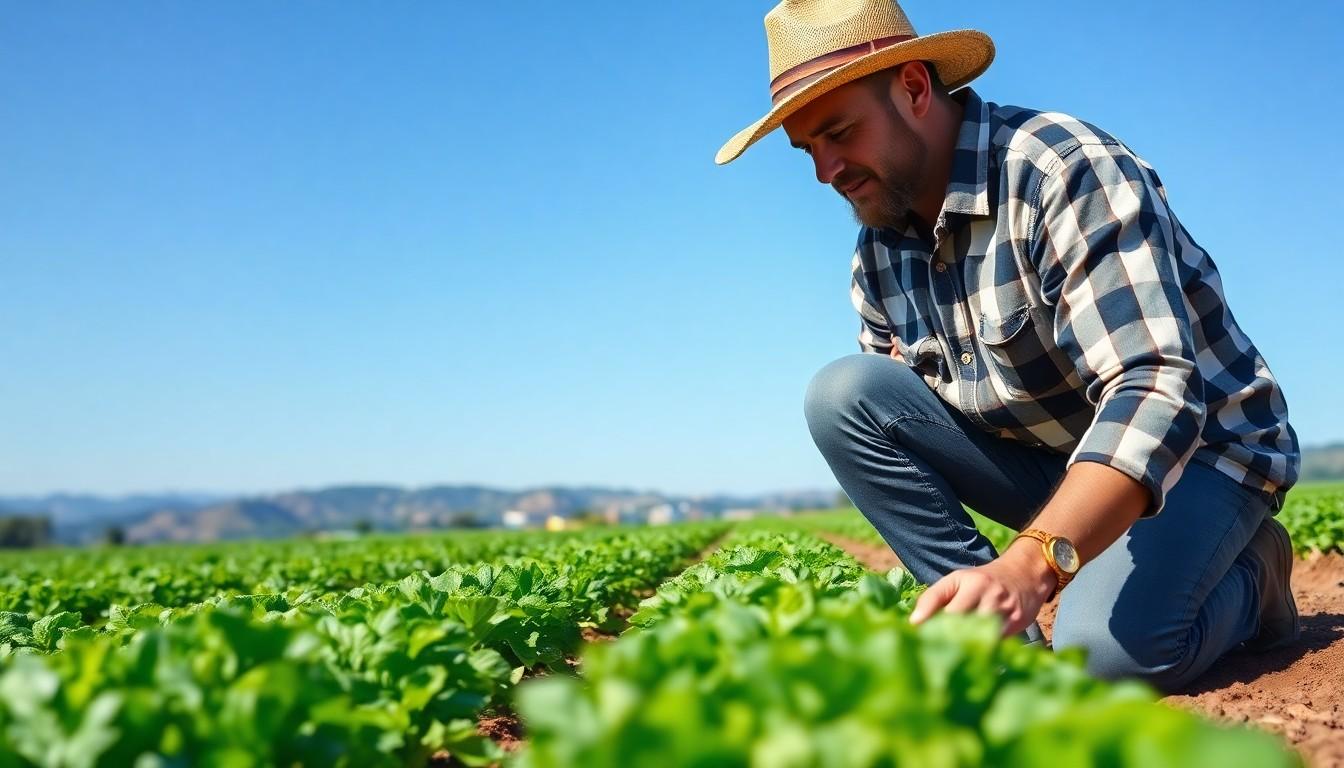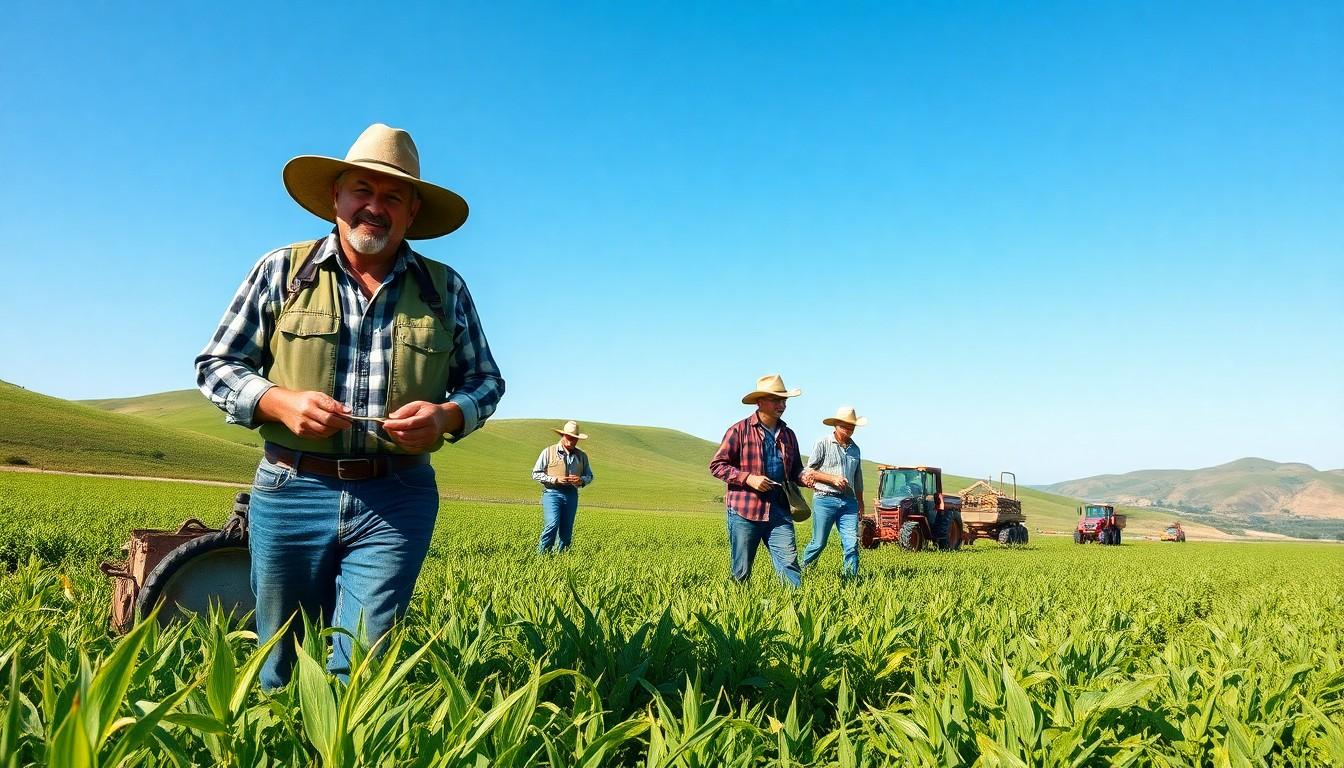The Best Fluffy Pancakes recipe you will fall in love with. Full of tips and tricks to help you make the best pancakes.

What Is the Current Greatest Threat to Agricultural Sustainability? Discover the Shocking Truth
In a world where avocados are a staple and kale reigns supreme, agricultural sustainability is under siege. With climate change throwing tantrums and pests throwing parties in the fields, farmers are facing challenges that could make even the most seasoned green thumb sweat. It’s not just about growing food anymore; it’s about growing it sustainably while dodging the curveballs nature throws their way.
So what’s the greatest threat lurking in the shadows of our farms? Spoiler alert: it’s not just a pesky bug or a drought. As the stakes rise, understanding these threats becomes crucial for ensuring a future where our plates are full and our planet stays healthy. Dive in as we uncover the biggest culprits threatening the delicate balance of agricultural sustainability.
What Is the Current Greatest Threat to Agricultural Sustainability?
Agricultural sustainability refers to the ability of farming systems to endure and adapting while maintaining productivity. Environmental, economic, and social dimensions define it, each interlinked and essential for long-term success. Sustainable practices aim to meet present food needs without compromising future generations’ ability to meet their own.
Climate change poses a significant threat to agricultural sustainability, impacting crop yields, water resources, and soil health. Extreme weather events, including droughts and floods, disrupt production cycles and lead to food insecurity. Farmers face challenges in adapting their practices to mitigate these impacts effectively.
Pest issues increasingly jeopardize sustainable practices. Invasive species can outcompete native crops, diminishing biodiversity and reducing yields. Integrated pest management offers solutions, promoting ecological balance and reducing reliance on chemical pesticides.
Soil health plays a vital role in sustaining agriculture. Healthy soil enhances nutrient retention and moisture levels, critical for crop growth. Practices such as crop rotation and cover cropping can improve soil quality and prevent erosion.
Water resources must also be managed wisely. Over-extraction and pollution threaten freshwater supplies essential for irrigation. Implementing efficient irrigation techniques and rainwater harvesting can help secure this critical resource.
Social equity in agriculture impacts sustainability as well. Engaging communities and fostering fair labor practices contribute to resilient agricultural systems. Supporting smallholder farmers through education and resources can strengthen local food systems and promote sustainability.
Key Players in Agriculture

Key players in agriculture significantly influence sustainability practices. Understanding their roles offers insight into overcoming current challenges.
Farmers and Producers
Farmers and producers form the backbone of agricultural systems. They manage crop cultivation and livestock production, balancing productivity and sustainability. Innovative farming techniques are increasingly adopted by these individuals, including precision agriculture and organic farming. By integrating sustainable practices, they address climate change impacts and enhance soil health. Many farmers advocate for crop rotation, which improves soil fertility, while others adopt cover cropping methods. Together, these sustainable practices lead to improved yields and resource conservation. Ultimately, their active participation shapes the future of agricultural sustainability.
Regulatory Bodies
Regulatory bodies develop and enforce guidelines essential for sustainable agriculture. These organizations ensure compliance with environmental and safety standards. Agencies such as the Environmental Protection Agency (EPA) create regulations that protect water resources and soil health. Additionally, local government entities promote policies that support agricultural innovation and resilience. Collaborating with farmers and producers, regulatory bodies encourage sustainable practices through grants and technical assistance. They play a crucial role in shaping agricultural policies that address climate change and pest management. Influence from these bodies ensures that farming remains sustainable and viable for future generations.
Identifying Current Threats
Understanding current threats to agricultural sustainability highlights significant challenges that farmers face.
Climate Change
Climate change significantly alters weather patterns. It decreases crop yields and affects water availability. Extreme weather events, such as droughts and floods, disrupt agricultural production. Crop resilience becomes crucial in adapting to these shifts. Rising temperatures also contribute to pest and disease proliferation, further impacting food security.
Pesticide Overuse
Pesticide overuse poses a serious risk to sustainable agriculture. It leads to the development of pesticide-resistant pests, creating a cycle of dependency on chemical solutions. Increased chemical application has detrimental effects on local ecosystems and non-target species. Promoting integrated pest management practices offers a sustainable alternative, enhancing crop health without excessive chemical reliance.
Soil Degradation
Soil degradation threatens the foundation of agricultural productivity. Erosion, compaction, and nutrient depletion result from poor farming practices. The loss of organic matter reduces soil fertility, making crops more vulnerable. Implementing practices like crop rotation and cover cropping restores soil health and boosts resilience. Sustainable soil management strategies play a crucial role in ensuring long-term agricultural viability.
Water Scarcity
Water scarcity presents a pressing challenge for agricultural operations. Over-extraction of water resources impacts both crop irrigation and ecosystem balance. Climate change exacerbates water scarcity through increased evaporation and reduced precipitation. Adopting water-efficient practices, such as drip irrigation and rainwater harvesting, enhances water conservation. Sustainable water management is vital for supporting agricultural sustainability in arid regions.
Impact of Threats on Agricultural Sustainability
Threats to agricultural sustainability significantly affect economic, social, and environmental spheres. Understanding these impacts is crucial for developing strategies to enhance resilience.
Economic Consequences
Economic trends show that climate change and pest issues lead to increased costs for farmers. Crop failures caused by extreme weather events often result in reduced income. Input costs for fertilizers and pest management also rise as farmers adapt to changing conditions. Investments in sustainable practices, while necessary, can initially strain financial resources. Additionally, market instability due to unpredictable yields creates uncertainty for producers, further complicating economic sustainability. The combination of these factors can intensify the vulnerability of farming operations and jeopardize food security.
Social Implications
Social dynamics suffer when agricultural sustainability is threatened. Disruptions in food supply chains often lead to higher food prices, putting stress on low-income communities. Farmers facing economic hardship may struggle to support their families, leading to a decline in rural livelihoods. Community engagement is critical for maintaining social structures, yet disenfranchised farmers face barriers to participation. Policy decisions that do not consider the voices of smallholder farmers exacerbate inequalities within the agricultural sector. Ultimately, social cohesion diminishes, challenging the fabric of rural communities.
Environmental Effects
Environmental consequences arise directly from threats to agricultural sustainability. Soil erosion and degradation occur due to unsustainable farming practices, impacting crop productivity. Water scarcity worsens as climate change alters precipitation patterns, stressing available resources. Biodiversity declines with the increase in monoculture practices, threatening ecosystem balance. These changes disrupt natural processes essential for agriculture and contribute to the depletion of vital resources. Long-term environmental harm diminishes the ability of ecosystems to support sustainable farming, creating a cycle that undermines future agricultural viability.
Strategies for Mitigating Threats
Addressing current threats to agricultural sustainability requires targeted strategies that leverage innovative practices and effective policy changes.
Innovative Farming Practices
Adopting innovative farming practices significantly enhances sustainability. Precision agriculture technologies optimize resource use, leading to increased efficiency. Organic farming methods reduce reliance on harmful pesticides and promote biodiversity. Implementing cover cropping and crop rotation strengthens soil health, preventing degradation. Integrated pest management combines biological, cultural, and mechanical strategies to minimize pest threats sustainably. These techniques not only boost productivity but also ensure environmental preservation. Moreover, water-efficient practices like drip irrigation conserve water resources in the face of scarcity.
Policy Changes
Implementing robust policy changes supports sustainable agriculture. Regulatory frameworks must promote incentives for farmers who adopt eco-friendly practices. Financial assistance plays a key role in encouraging the adoption of sustainable techniques. Collaboration between government agencies and agricultural stakeholders enhances the development of effective guidelines. Ensuring food security through policies that address climate change impacts is crucial. Additionally, support for smallholder farmers strengthens food systems and promotes social equity. These policies create a conducive environment for sustainable practices and long-term agricultural resilience.
Conclusion
Agricultural sustainability faces unprecedented challenges that threaten food security and environmental health. The interplay of climate change and pest issues creates a precarious situation for farmers striving to maintain productivity while adopting sustainable practices. As extreme weather events and invasive species continue to disrupt agricultural systems, the need for innovative solutions becomes increasingly urgent.
By embracing sustainable farming techniques and fostering collaboration among stakeholders, the agricultural sector can navigate these threats effectively. Prioritizing soil health, water conservation, and social equity will not only enhance resilience but also pave the way for a more sustainable future. Addressing these challenges head-on is essential for ensuring that agriculture continues to thrive in harmony with the planet.




